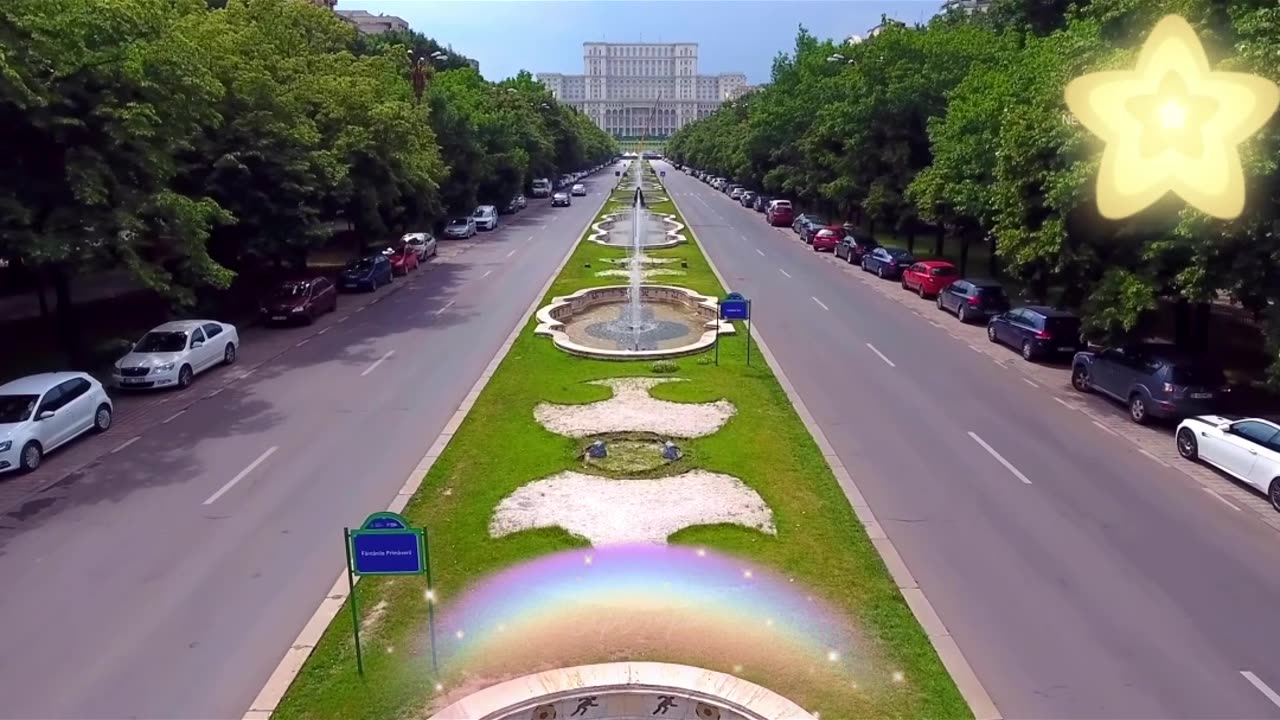Premium Only Content

Romania history, as they were the ancestors of the modern
Romania, located in southeastern Europe, has a rich and complex history that spans thousands of years. Here is an overview of Romania's history:
Ancient Times:
The territory of modern-day Romania was inhabited by various ancient peoples, including the Dacians and the Getae. The Dacians are particularly significant in Romanian history, as they were the ancestors of the modern Romanian people.
Roman Conquest:
In 106 AD, the Roman Empire conquered the Dacian Kingdom and established the province of Dacia. This period brought significant Roman influence to the region and contributed to the development of Latin-based Romance languages in the area.
Migration Period:
In the 3rd century AD, as the Roman Empire declined, the region came under the influence of various migrating tribes, including Goths, Huns, and Slavs.
Medieval Period:
In the 9th century, the territory that is now Romania began to emerge as a distinct region in the context of the medieval states of Transylvania, Wallachia, and Moldavia.
The Hungarian Kingdom exerted control over Transylvania, while Wallachia and Moldavia remained more autonomous principalities. These regions had their own rulers and developed their unique cultural and political identities.
Ottoman Rule:
In the late 14th and early 15th centuries, the Ottoman Empire expanded into southeastern Europe. Wallachia and Moldavia both became vassal states of the Ottomans, leading to centuries of Ottoman influence and control in the region.
Phanariote Domination:
During the 18th century, the rulers of Wallachia and Moldavia were often chosen from the Greek Phanariote nobility, who were appointed by the Ottomans. This period is known for corruption and economic exploitation.
Independence and Unification:
The 19th century marked a period of growing nationalism and desire for independence in the Romanian principalities. The Greek War of Independence and the Crimean War indirectly contributed to Romanian aspirations for autonomy.
In 1859, Wallachia and Moldavia elected the same ruler, Alexandru Ioan Cuza, which was a significant step toward unification. In 1862, he became the ruler of both principalities.
In 1877-1878, Romania fought alongside Russia against the Ottoman Empire in the Russo-Turkish War. As a result, Romania gained recognition of its independence and territorial expansion.
Kingdom of Romania:
In 1881, the principality of Romania officially became the Kingdom of Romania, with Carol I as its first monarch.
World War I and Greater Romania:
Romania entered World War I on the side of the Allies in 1916. After the war, Romania gained significant territory and became known as "Greater Romania."
Interwar Period:
Romania enjoyed a period of relative stability and economic growth during the interwar years.
World War II and Communist Rule:
Romania initially aligned itself with Nazi Germany but later switched sides to join the Allies. After World War II, Romania came under Soviet influence, leading to the establishment of a communist government under Gheorghe Gheorghiu-Dej.
The Communist Era and Revolution:
Romania was ruled by the repressive regime of Nicolae Ceaușescu from 1965 to 1989. The Romanian Revolution in December 1989 led to the overthrow of the Ceaușescu regime.
Post-Communist Romania:
After the revolution, Romania transitioned to a democratic system and market economy. The country faced various political and economic challenges as it moved away from its communist past.
European Union and NATO:
Romania joined NATO in 2004 and the European Union in 2007, solidifying its place in Western institutions.
Today, Romania is a democratic republic and a member of several international organizations. Its history is marked by a diverse cultural heritage and a long struggle for independence and self-determination
-
 1:15:00
1:15:00
Awaken With JP
12 hours agoMerry Christmas NOT Happy Holidays! Special - LIES Ep 71
169K136 -
 1:42:21
1:42:21
The Quartering
13 hours agoTrump To INVADE Mexico, Take Back Panama Canal Too! NYC Human Torch & Matt Gaetz Report Drops!
133K100 -
 2:23:15
2:23:15
Nerdrotic
13 hours ago $12.27 earnedA Very Merry Christmas | FNT Square Up - Nerdrotic Nooner 453
103K11 -
 1:14:05
1:14:05
Tucker Carlson
13 hours ago“I’ll Win With or Without You,” Teamsters Union President Reveals Kamala Harris’s Famous Last Words
195K361 -
 1:58:31
1:58:31
The Dilley Show
13 hours ago $33.68 earnedTrump Conquering Western Hemisphere? w/Author Brenden Dilley 12/23/2024
149K40 -
 1:09:59
1:09:59
Geeks + Gamers
14 hours agoSonic 3 DESTROYS Mufasa And Disney, Naughty Dog Actress SLAMS Gamers Over Intergalactic
105K21 -
 51:59
51:59
The Dan Bongino Show
15 hours agoDemocrat Donor Admits The Scary Truth (Ep. 2393) - 12/23/2024
890K3.01K -
 2:32:15
2:32:15
Matt Kohrs
1 day agoRumble CEO Chris Pavlovski Talks $775M Tether Partnership || The MK Show
134K34 -
 28:23
28:23
Dave Portnoy
1 day agoDavey Day Trader Presented by Kraken - December 23, 2024
165K44 -
 59:29
59:29
BonginoReport
16 hours agoTrump, Murder Plots, and the Christmas Miracle: Evita + Jack Posobiec (Ep.110) - 12/23/2024
169K148